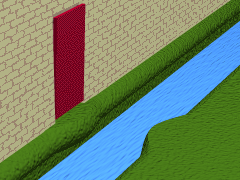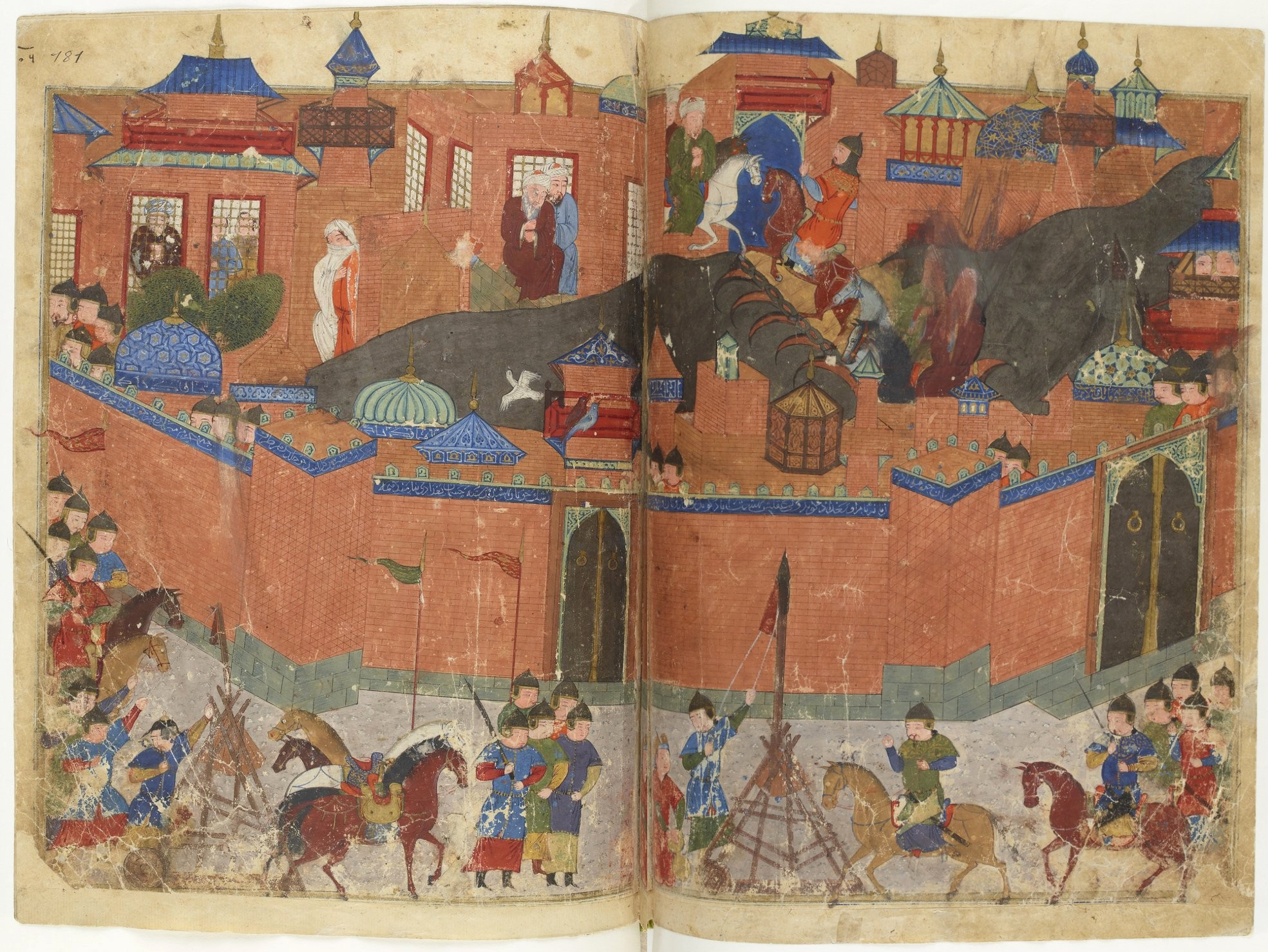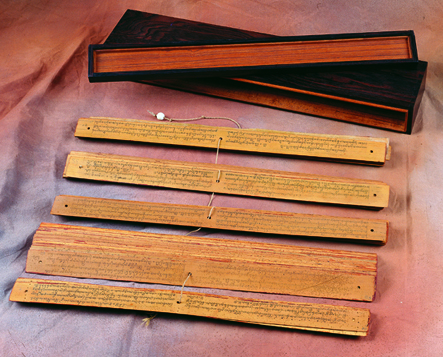|
Kali Mas
The Kali Mas ("Golden River" in Javanese), also known as Kali Surabaya, is a distributary of the Brantas River in East Java, flowing north-easterly towards the Madura Strait. This river also forms part of the border between the Sidoarjo and Gresik regencies of East Java, Indonesia. History The port city of Surabaya is built along the river. The old Surabaya harbour, built centuries ago, is located near the river mouth. At one point in time, this was an entry port to the Kingdom of Majapahit, and it is also here that the founder of the Majapahit empire ( Raden Wijaya) fought off a Mongol invasion in 1293. During the times of the Dutch East Indies, this river was heavily utilized as a goods transport route. Large trade ships unload commodity goods at the Strait of Madura, where smaller ships take over and distribute the trade goods inland. The Kali Mas harbour was built to facilitate such trade. The areas along Kali Mas were split into two, which are called ''Westerkade Ka ... [...More Info...] [...Related Items...] OR: [Wikipedia] [Google] [Baidu] |
Surabaya
Surabaya is the capital city of East Java Provinces of Indonesia, province and the List of Indonesian cities by population, second-largest city in Indonesia, after Jakarta. Located on the northeastern corner of Java island, on the Madura Strait, it is one of the earliest port cities in Southeast Asia. According to the Government of Indonesia, National Development Planning Agency, Surabaya is one of the Regions of Indonesia#Development regions, four main central cities of Indonesia, alongside Jakarta, Medan, and Makassar. The city had a population of 2,874,314 within its city limits at the 2020 census.Badan Pusat Statistik, Jakarta, 2021. With 3,009,286 people living in the city as of mid 2023 (comprising 1,490,358 males and 1,518,928 females) Badan Pusat Statistik, Jakarta, 28 February 2024, ''Kota Surabaya Dalam Angka 2024'' (Katalog-BPS 1102001.3578) and over 10 million in the extended Surabaya metropolitan area, according to the latest official estimate, Surabaya is the ... [...More Info...] [...Related Items...] OR: [Wikipedia] [Google] [Baidu] |
List Of Drainage Basins Of Indonesia
This is a list of river catchment areas, also known as drainage basins, in Indonesia. Based on the National River Basin Classification map, Indonesia has a total of 42,210 river basins organized as a basis for determining watershed management policies. The policy decisions are based on various criteria such as land conditions (critical land, land cover, erosion), water quality, water quantity, water continuity, socio-economic factors, investment in soil and water conservation structures, as well as spatial utilization. In the National Medium-Term Development Plan (RPJMN) for the period 2015–2019, there were 15 priority river basins (indicated in yellow) out of 108 designated priority river basins in the Integrated River Basin Management Plan (RPDAST) according to Decree No. 328/Menhut-II/2009. Additionally, there are 9 river basins categorized as disaster-prone areas. Going forward, all the 108 designated priority river basins in the RPDAST will be given priority, particularly f ... [...More Info...] [...Related Items...] OR: [Wikipedia] [Google] [Baidu] |
Drawbridge
A drawbridge or draw-bridge is a type of moveable bridge typically at the entrance to a castle or tower surrounded by a moat. In some forms of English, including American English, the word ''drawbridge'' commonly refers to all types of moveable bridges, such as bascule bridges, vertical-lift bridges and swing bridges, but this article concerns the narrower historical definition where the bridge is used in a defensive structure. As used in castles or defensive structures, drawbridges provide access across defensive structures when lowered, but can quickly be raised from within to deny entry to an enemy force. Castle drawbridges Middle Ages, Medieval castles were usually defended by a ditch or moat, crossed by a wooden bridge. In early castles, the bridge might be designed to be destroyed or removed in the event of an attack, but drawbridges became very common. A typical arrangement would have the drawbridge immediately outside a gatehouse, consisting of a wooden Deck (bridge), ... [...More Info...] [...Related Items...] OR: [Wikipedia] [Google] [Baidu] |
Kali Mas Harbour
Kali (; , ), also called Kalika, is a major goddess in Hinduism, primarily associated with time, death and destruction. Kali is also connected with transcendental knowledge and is the first of the ten Mahavidyas, a group of goddesses who provide liberating knowledge. Of the numerous Hindu goddesses, Kali is held as the most famous. She is the preeminent deity in the Hindu tantric and the Kalikula worship traditions, and is a central figure in the goddess-centric sects of Hinduism as well as in Shaivism. Kali is chiefly worshipped as the Divine Mother, Mother of the Universe, and Divine feminine energy. The origins of Kali can be traced to the pre-Vedic and Vedic era goddess worship traditions in the Indian subcontinent. Etymologically, the term ''Kali'' refers to one who governs time or is black. The first major appearance of Kali in the Sanskrit literature was in the sixth-century CE text ''Devi Mahatmya''. Kali appears in many stories, with the most popular one being w ... [...More Info...] [...Related Items...] OR: [Wikipedia] [Google] [Baidu] |
Dutch East Indies
The Dutch East Indies, also known as the Netherlands East Indies (; ), was a Dutch Empire, Dutch colony with territory mostly comprising the modern state of Indonesia, which Proclamation of Indonesian Independence, declared independence on 17 August 1945. Following the Indonesian National Revolution, Indonesian War of Independence, Indonesia and the Netherlands Dutch–Indonesian Round Table Conference, made peace in 1949. In the Anglo-Dutch Treaty of 1824, the Dutch ceded the governorate of Dutch Malacca to Britain, leading to its eventual incorporation into Malacca, Malacca (state) of modern Malaysia. The Dutch East Indies was formed from the nationalised Factory (trading post), trading posts of the Dutch East India Company, which came under the administration of the Batavian Republic, Dutch government in 1800. During the 19th century, the Dutch fought Royal Netherlands East Indies Army, many wars against indigenous rulers and peoples, which caused hundreds of thousands of d ... [...More Info...] [...Related Items...] OR: [Wikipedia] [Google] [Baidu] |
Mongol Invasion
The Mongol invasions and conquests took place during the 13th and 14th centuries, creating history's largest contiguous empire, the Mongol Empire (1206–1368), which by 1260 covered large parts of Eurasia. Historians regard the Mongol devastation as one of the deadliest episodes in history. At its height, the Mongol Empire included modern-day Mongolia, China, North Korea, South Korea, Myanmar, Iran, Iraq, Afghanistan, Pakistan, Kashmir, Kazakhstan, Tajikistan, Kyrgyzstan, Turkmenistan, Uzbekistan, Siberia, Georgia, Armenia, Azerbaijan, Turkey, Belarus, Ukraine, Moldova, Romania, and most of European Russia. Overview The Mongol Empire developed in the course of the 13th century through a series of victorious campaigns throughout Eurasia. At its height, it stretched from the Pacific to Central Europe. It was later known as the largest contiguous land empire of all time. In contrast with later "empires of the sea" such as the European colonial powers, the Mongol Empire was a ... [...More Info...] [...Related Items...] OR: [Wikipedia] [Google] [Baidu] |
Raden Wijaya
Raden Wijaya or Raden Vijaya, also known as Nararya Sangramawijaya and his regnal name Kertarajasa Jayawardhana was a Javanese emperor and founder of the Majapahit Empire who ruled from 1293 until his death in 1309.Slamet Muljana, 2005, ''Runtuhnya Kerajaan Hindu-Jawa dan Timbulnya Negara-negara Islam di Nusantara'', Yogyakarta: LKiS, . The history of his founding of Majapahit was written in several records, including Pararaton and Negarakertagama. His rule was marked by the victory against the army and the Mongol navy of Kublai Khan's Yuan dynasty. Ancestry There are several versions of his ancestry. According to Pararaton, Raden Wijaya was the son of Mahisa Campaka, prince of Singhasari. Mahisa Campaka alias Narasingamurti is the son of Mahisa Wonga Teleng. Meanwhile, Mahisa Wonga Teleng was the son of Ken Arok, founder of the Rajasa dynasty. According to later controversial source from 17th century, Pustaka Rajyarajya i Bhumi Nusantara, Raden Wijaya was the son of Rakey ... [...More Info...] [...Related Items...] OR: [Wikipedia] [Google] [Baidu] |
Kingdom Of Majapahit
Majapahit (; (eastern and central dialect) or (western dialect)), also known as Wilwatikta (; ), was a Javanese Hindu-Buddhist thalassocratic empire in Southeast Asia based on the island of Java (in modern-day Indonesia). At its greatest extent, following significant military expansions, the territory of the empire and its tributary states covered almost the entire Nusantara archipelago, spanning both Asia and Oceania. After a civil war that weakened control over the vassal states, the empire slowly declined before collapsing in 1527 due to an invasion by the Sultanate of Demak. The fall of Majapahit saw the rise of Islamic kingdoms in Java. Established by Raden Wijaya in 1292, Majapahit rose to power after the Mongol invasion of Java and reached its peak during the era of the queen Tribhuvana and her son Hayam Wuruk, whose reigns in the mid-14th century were marked by conquests that extended throughout Southeast Asia. This achievement is also credited to the famous pri ... [...More Info...] [...Related Items...] OR: [Wikipedia] [Google] [Baidu] |
River Mouth
A river mouth is where a river flows into a larger body of water, such as another river, a lake/reservoir, a bay/gulf, a sea, or an ocean. At the river mouth, sediments are often deposited due to the slowing of the current, reducing the carrying capacity of the water. The water from a river can enter the receiving body in a variety of different ways. The motion of a river is influenced by the relative density of the river compared to the receiving water, the rotation of the Earth, and any ambient motion in the receiving water, such as tides or seiches. If the river water has a higher density than the surface of the receiving water, the river water will plunge below the surface. The river water will then either form an underflow or an interflow within the lake. However, if the river water is lighter than the receiving water, as is typically the case when fresh river water flows into the sea, the river water will float along the surface of the receiving water as an overflow. Al ... [...More Info...] [...Related Items...] OR: [Wikipedia] [Google] [Baidu] |






